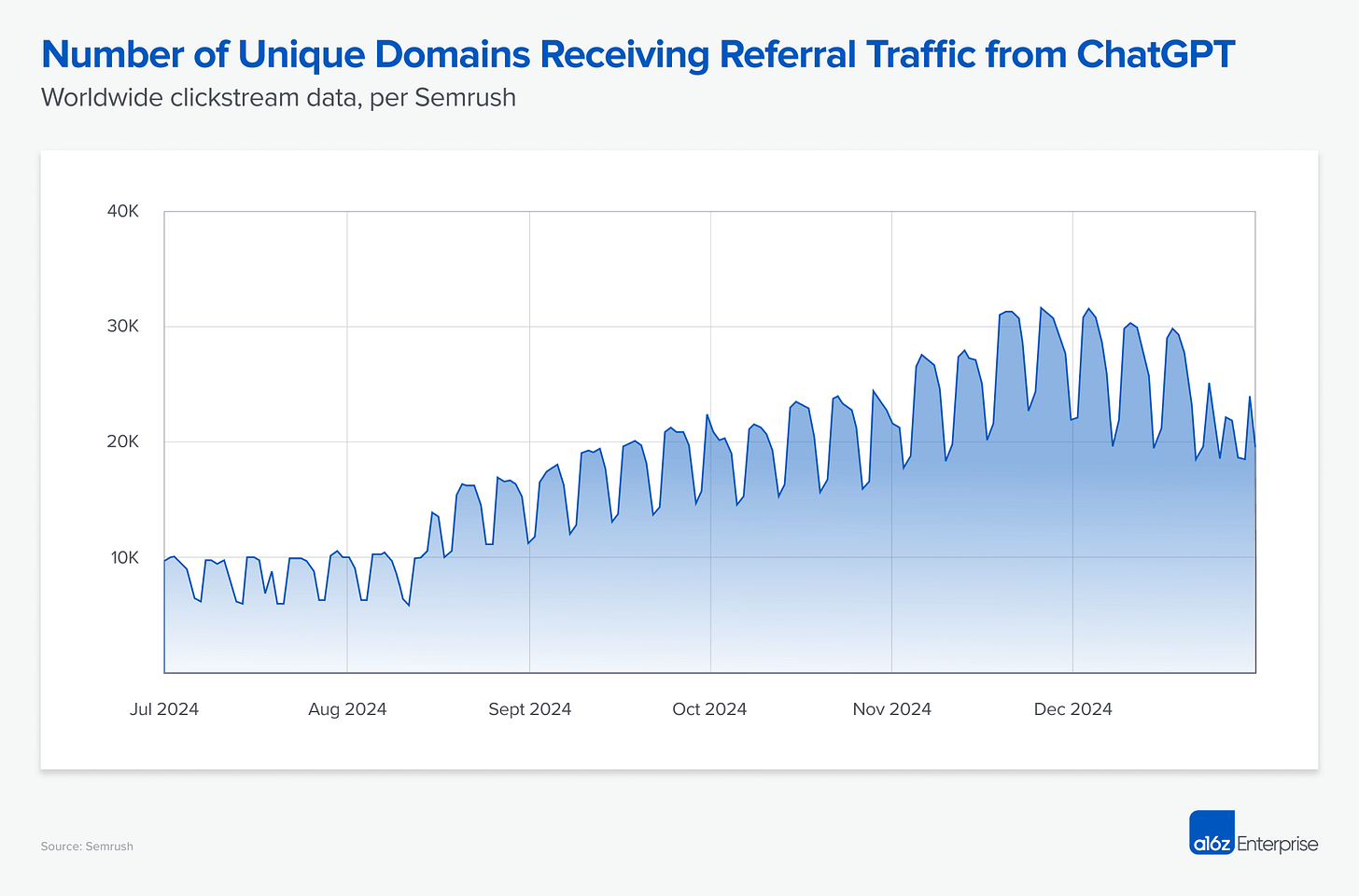💼 AI Set to Cut 50% of Entry Jobs, 🧠 Self-Editing Code Arrives, 🌐 SEO Becomes GEO
PLUS: Odyssey Streams AI Worlds • ChatGPT Hits 800M Users • Google Runs LLMs on Phones Offline
👋 This week in AI
🎵 Podcast
Don’t feel like reading? Listen to it instead.
📰 Latest news
AI Could Axe Half of Entry-Level White-Collar Jobs by 2030 - Anthropic CEO
Up to 50 % of entry-level white-collar roles could disappear within five years, pushing U.S. unemployment to 10–20 %, according to Anthropic CEO Dario Amodei. He links the risk to agentic AI that already codes, analyses finance and manages support faster and cheaper than junior staff.
Signs of the pivot are visible: Microsoft (6 000 jobs, 3 %), Walmart (1 500 corporate roles) and CrowdStrike (500 jobs, 5 %) have trimmed head-counts while exploring AI efficiencies.
CEOs across sectors are freezing new hires and delaying back-fills as they test AI agents’ cost advantage. Lawmakers have issued no broad warnings, and public awareness remains low.
Why it Matters
If Amodei’s forecast holds, the labour market faces a rapid shock unlike earlier tech shifts: job cuts arrive before new roles emerge, and they span law, finance, tech and consulting rather than a single industry.
Wage growth could stall for younger workers, while profits and equity concentrate in AI-centric firms, widening wealth gaps.
Anthropic’s proposed 3 % “token tax” on model usage and its new economic-impact index aim to fund retraining and inform policy, but action must precede the adoption curve. Without early safeguards and large-scale upskilling, a decade of AI-driven productivity could coexist with historic under-employment and social tension.
Odyssey Streams AI Worlds in Real Time—Video You Can Walk Through
A world model—trained on 10 000 + hours of custom 360° footage captured with backpack cameras—generates one frame every 40 ms, giving near-gameplay fluidity.
The system holds spatial coherence for five-minute sessions and streams from Nvidia H100 clusters at roughly $1–2 per user-hour. Early visuals blur and warp, yet creators can already export scenes to Unreal Engine, Blender or After Effects, shrinking the gap from AI sketch to polished asset.
Why it Matters
By conjuring environments on the fly, Odyssey hints at a medium where films, ads, lessons and games merge into a single, responsive format. As streaming costs fall, studios could trim set-design spend, advertisers spin up tailored product tours, and indies prototype levels without art teams. The proprietary backpack-camera data moat should yield crisper worlds than rivals relying on scraped clips, shifting labour from asset creation to high-level direction and opening a new AI wedge into a $250 billion screen-content market.
From SEO to GEO: Competing for the Model’s Memory
Generative Engine Optimisation (GEO) is displacing classic SEO as AI chat interfaces become the default way people find information. Instead of fighting for a blue-link ranking on Google, brands now vie to be named inside an LLM’s answer.
Queries delivered to models like GPT-4o, Gemini and Claude average 23 words (vs 4 in legacy search) and unfold over six-minute sessions, so content must be tightly structured, meaning-dense and easy for models to quote.
Early GEO platforms (Profound, Goodie, Daydream, Ahrefs Brand Radar, Semrush AI Toolkit) already analyse how often a model cites a site, track sentiment and suggest copy formats that LLMs favour.
With Apple baking AI-native engines into Safari, the $80 billion SEO industry’s link-based playbook is losing relevance; marketers instead optimise for “reference-rate” and monitor outbound clicks that ChatGPT and peers are already sending to tens of thousands of domains.
Why it Matters
A shift towards GEO rewrites online content economics. Keyword stuffing and backlink trades give way to crafting prose that models can parse, summarise and remember.
Writers will prioritise clear headings, bullet logic and authoritative evidence—traits LLMs lift verbatim—while thin, repetitive articles sink from view. Because most leading models sit behind subscriptions rather than ads, providers have little incentive to surface entire webpages; they cite only sources that enrich their answers.
Publishers that fail to become quotable risk vanishing traffic, whereas those who master GEO can still capture referral clicks and brand mind-share.
The upshot: visibility will hinge on how fluently a brand’s knowledge is encoded inside the “AI layer,” forcing editors, SEOs and growth teams to learn prompt-informed content design or lose relevance as search itself dissolves into dialogue.
Self-Editing Code: Inside Sakana’s Darwin Gödel Machine Breakthrough
Sakana AI and UBC have open-sourced Darwin Gödel Machine—a coding agent that rewrites its own Python, benchmarks the edit, and stacks every winning version in an evolving archive. One unattended run lifted SWE-bench accuracy 20 → 50 % and Polyglot 14.2 → 30.7 %, with gains that carry across models and languages.
Why it matters
Turning compute into a perpetual “auto-R&D” loop pushes AI from static models to systems that continuously improve themselves. If safety checks keep each self-edit aligned with human goals, such agents could shrink software-maintenance costs, speed scientific tooling, and shift engineering effort from hand-tuning to overseeing smarter machines.
Bond’s “AI Trends 2025”: When AI Stops Being Novel and Starts Being Infrastructure
Bond Capital’s new “AI Trends 2025” deck distils hundreds of slides into one message — large-scale AI has flipped from premium add-on to default utility, and the hard numbers prove it.
800 million people use ChatGPT each week, a faster user-curve than smartphones or social media.
Token cost down 99.7 % since 2022, driven by denser GPUs and smarter scheduling.
US $212 billion in AI CapEx during 2024 — Big Tech spent 63 % more year-on-year, with NVIDIA capturing roughly a quarter.
105 000× drop in energy per token versus 2014 GPUs — efficiency gains outpace Moore’s Law.
7 million developers build with Gemini, processing 480 trillion tokens per month, up 50× YoY.
Data centres now consume 1.5 % of global electricity and are growing at 12 % annually.
65 % jump in Palantir’s US commercial clients shows mainstream enterprise uptake beyond consumer chatbots.
Why it Matters
Cratering compute costs shift AI from experimental to everyday — firms can automate support tickets, contract review or design simulation at consumer-app price points.
The CapEx surge signals enduring demand, yet the concentration of spend around one chip maker exposes a new supply-chain risk. Power draw, already a measurable slice of the grid, forces regulators to weigh energy policy against productivity gains.
For workers, 800 million weekly users marks the tipping point — fluency in prompt engineering and tool integration is no longer optional for career growth in knowledge roles.
Google AI Edge Gallery Puts Hugging Face Models on Your Phone
Google’s new AI Edge Gallery (experimental alpha) lets Android users download Hugging Face models and run them fully offline, with iOS support “soon.” The open-source app (Apache 2.0) taps a phone’s CPU/GPU/TPU to handle image generation, chat, code completion and more.
A built-in Prompt Lab offers single-turn templates and tunable parameters, while task shortcuts (e.g. “Ask Image”, “AI Chat”) surface suitable models such as Google’s Gemma 3n. Speed depends on handset horsepower and model size—larger LLMs work but respond more slowly.
Why it Matters
Shifting inference from cloud to handset removes bandwidth costs, slashes latency and, crucially, keeps personal data local—addressing privacy worries that deter AI adoption.
By packaging Hugging Face models in an Apache-licensed, phone-native wrapper, Google hands developers a low-friction path to embed generative features in consumer apps without legal headaches or server bills. If edge hardware keeps improving, this approach could chip away at the dominance of cloud-hosted LLMs and broaden AI access in regions with patchy connectivity.







